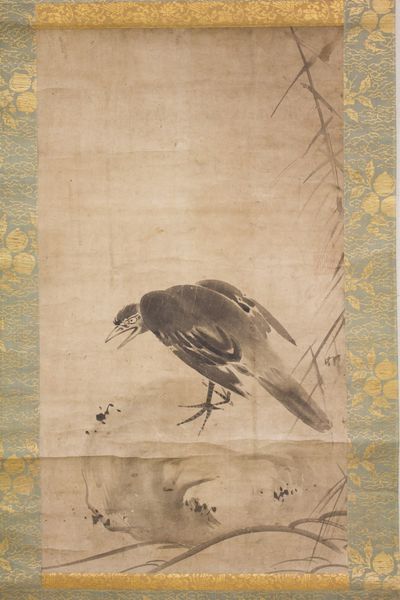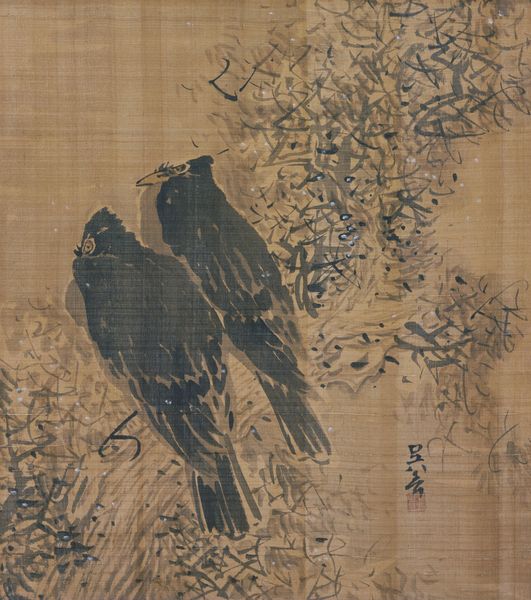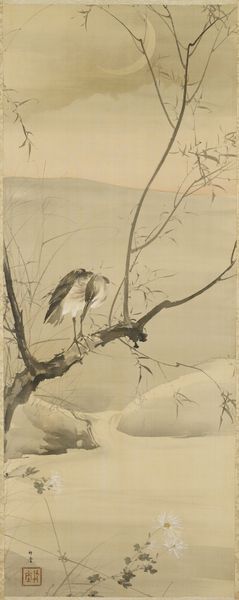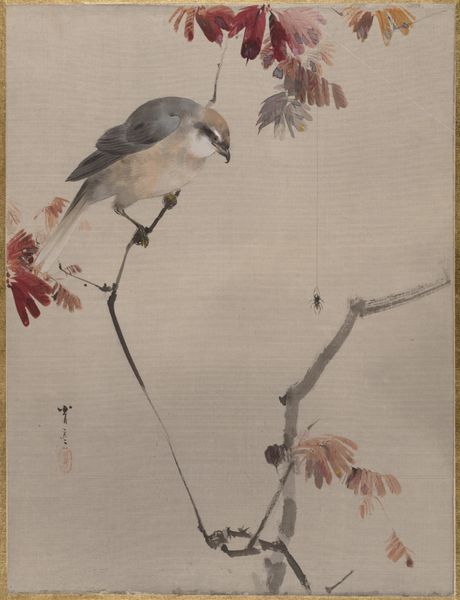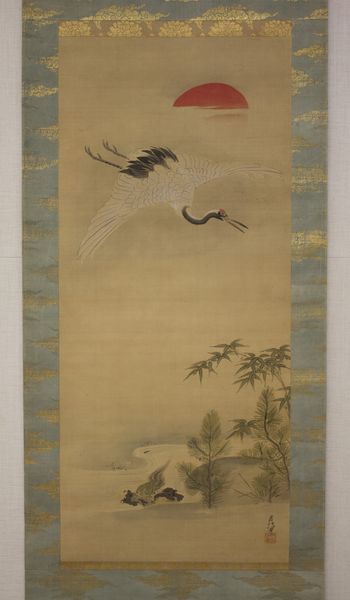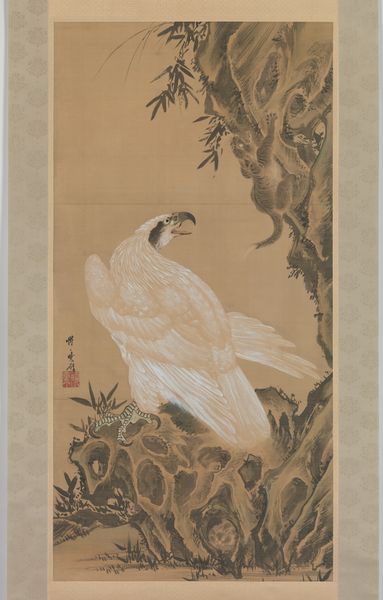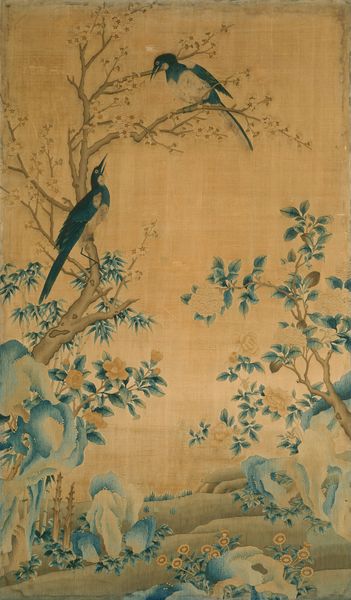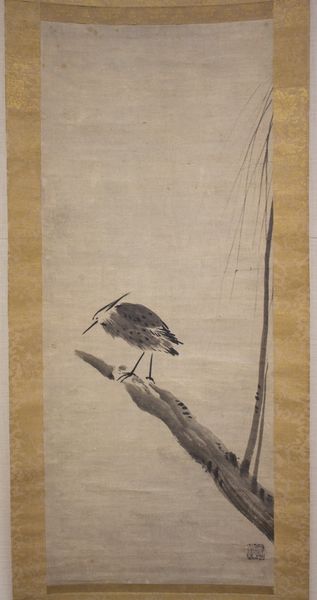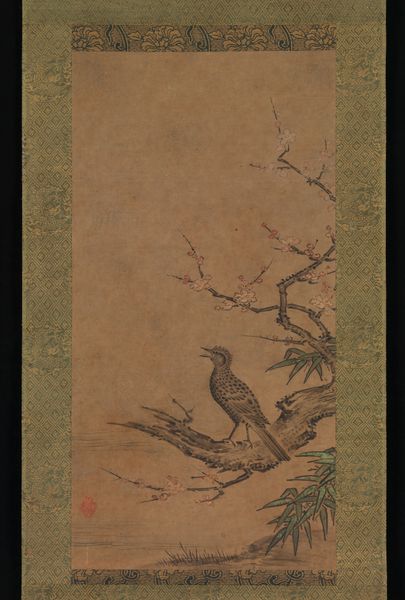
tempera, paper, watercolor, ink
#
ink painting
#
tempera
#
asian-art
#
landscape
#
bird
#
paper
#
watercolor
#
ink
Dimensions: Image: 33 3/8 × 12 1/4 in. (84.8 × 31.1 cm) Overall with mounting: 67 1/4 × 17 in. (170.8 × 43.2 cm) Overall with knobs: 67 1/4 × 18 3/4 in. (170.8 × 47.6 cm)
Copyright: Public Domain
Curator: Welcome. Before us is the ink painting, "Bird", by Kenkō Shōkei. This artwork, likely created sometime between 1467 and 1533, utilizes ink and watercolor on paper, presenting a serene avian scene. Editor: It has a delicate, almost mournful quality, doesn't it? The restrained palette and the vertical composition evoke a sense of quiet contemplation. It's not merely representational; there's a feeling of... yearning? Curator: Yes, that aligns with the deeper symbolic weight. Birds in East Asian art often carry messages of freedom, but also of transience, a poignant reminder of life's fleeting nature and the ephemeral quality of beauty. The bird here, perched precariously on the bare branch, is isolated within an immensity. It evokes powerful feelings of existential impermanence, echoing our deepest hopes, longings, and even our fear of isolation in a world marked by ceaseless change. Editor: The composition certainly reinforces that sense of solitude. The vast empty space above the bird contrasts starkly with the detailed rendering of its feathers. That careful rendering almost seems to elevate it to a kind of symbol. Curator: Precisely. In Shōkei’s time, literati painting, to which this piece alludes, was associated with intellectual and spiritual pursuits, blending painting, poetry, and calligraphy. It signified moral strength and refinement and fostered intimate personal contemplation, even when—as here—ostensibly simply presenting an image of a bird. Editor: It’s amazing how a seemingly simple ink painting of a bird can carry such cultural and emotional depth. Looking closer, the minimal details manage to imply an entire world. The careful application of washes creates a remarkable sense of depth, particularly given the limitations of the medium. Curator: These traditional East Asian artistic materials inherently reflect impermanence because of their intrinsic physical properties, which in turn connects back to historical perceptions and philosophies about humanity. Editor: Seeing the image through that historical, symbolic lens really enriches my understanding and amplifies the emotional impact, while my close formal examination draws me deeper into appreciating the exquisite visual composition. Curator: And I think both perspectives, delving into form and exploring iconographic lineage, heighten the experience, revealing fresh perspectives on a traditional artistic form.
Comments
No comments
Be the first to comment and join the conversation on the ultimate creative platform.

